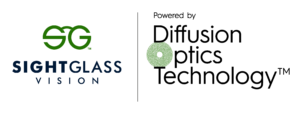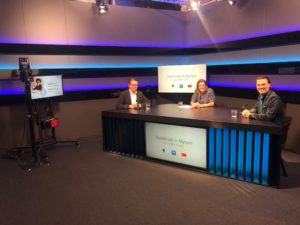October 7, 2021
 SAN RAMON, Calif. — CooperVision announced the results from its two-year clinical trial on the SightGlass Diffusion Optics Technology§ at a launch event in the Netherlands. The spectacles, which were designed to slow the progression of myopia in children,1 proved to be effective in doing just that.
SAN RAMON, Calif. — CooperVision announced the results from its two-year clinical trial on the SightGlass Diffusion Optics Technology§ at a launch event in the Netherlands. The spectacles, which were designed to slow the progression of myopia in children,1 proved to be effective in doing just that.
Children who wore the spectacles full-time, including not removing them for near-work, progressed on average one-half diopter less than those wearing control spectacles. The results were associated with a 59%2 reduction in myopia progression.
The CYPRESS clinical study3 enrolled, randomized, and dispensed the lenses to 256 eligible children across 14 clinical trial sites in the United States and Canada. At the time of enrollment, subjects were six to 10 years old having myopia between -0.75D and -4.50D.
After two years of wear, 85% of children wearing the innovative spectacle lenses showed less than one diopter of myopia progression.4 Moreover, the study also showed that 41% of the children wearing spectacle lenses with Diffusion Optics Technology showed no clinically meaningful progression in refractive error after two years versus only 17% in the control group.5
Distance visual acuity with lenses incorporating Diffusion Optics Technology was on average better than 6/6 (20/20) at each visit and similar to single vision spectacle lenses at all visits from dispensing through the 24-month visit.6 In the trial, children on average wore both the test lenses and standard single vision spectacle lenses more than 12 hours each day over a 24-month period, suggesting that children readily adapted to the Diffusion Optics Technology.7 The CYPRESS trial is now continuing into its third year.
“Our team has been singularly focused on advancing medical science to not only correct children’s vision, but also to help slow the progression of myopia. Applying our Diffusion Optics Technology to spectacle lenses makes myopia management straightforward to integrate within eye care practices and easy to become part of children’s everyday lives,”8 said Joe Rappon, OD, MS, FAAO, chief medical officer for SightGlass Vision.
The product will be available from CooperVision to eye care professionals in the Netherlands beginning this month.
§ Indications for use: Diffusion Optics Technology (DOT) spectacle lenses are indicated for the correction of refractive ametropia (myopia and/or astigmatism) and for the reduction in the rate of myopic progression in phakic children who are aged 6 to 13 years old with non-diseased eyes. DOT spectacle lenses should be worn constantly for all activities except for those outlined in WARNINGS (a minimum of 10 hours per day). These lenses are manufactured by SightGlass Vision in Palo Alto, CA, USA.
References
1 Reduction in progression of spherical equivalent refraction and axial length from baseline over 24 months was 47% and 24% on average, respectively (p≤0.0041)
2 Compared to control spectacle lenses. Analysis based on parent responses to in-office question, “Does your child remove their spectacles for any near vision activities?” (n=51 test, n=62 control). For the full study cohort, reduction in progression of spherical equivalent refraction baseline over 24 months was 47% on average.
3 Rappon J, Neitz J, Neitz M, Young G, Chalberg T. CYPRESS 12-month Results: Safety and Efficacy from a Pivotal Study of Novel Spectacle Lenses Designed to Reduce Myopia Progression. Optom Vis Sci. 2020;97:E-abstract 200036
4 Versus 65% of control subjects, p=0.0032 (n=74 test, n=87 control)
5 No clinically meaningful change in refractive error means that there was less than a 0.25D increase in myopia from baseline as measured by cycloplegic autorefraction.(p<0.0001)
6 Mean high-contrast distance (logMAR) VA with Diffusion Optics Technology™ was -0.04, -0.06, -0.06, -0.08, -0.06, and -0.08 at the baseline, 30-day, 6-month, 12-month, 18-month, and 24-month visits respectively. Mean high-contrast distance (logMAR) VA with control spectacle lens was -0.04, -0.06, -0.05, -0.06, -0.05, -0.06 at the baseline, 30-day, 6-month, 12-month, 18-month, and 24-month visits respectively.
7 Spectacle lenses with Diffusion Optics Technology™ are indicated to be worn constantly for all activities except for those outlined in WARNINGS (a minimum of 10 hours per day).
8 Pupil center height measurements required.














